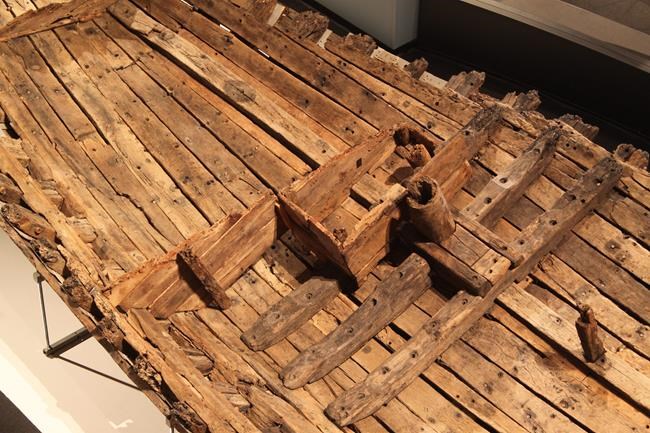
Restoration done on vessel that sank more than 300 years ago
AUSTIN, Texas – Archeologists have finished restoring the partial remains of a frigate that was carrying French colonists to the New World when it sank in a storm off the Texas coast more than 300 years ago.
The restored remains of the La Belle’s hull will be put on display at the Bullock Texas State History Museum in Austin, Texas A&M University said in a statement sent Friday to The Associated Press.
“When excavated, the archaeological site was found full of merchandise — everything requisite to form a colony and establish trade — knives, axe heads, pottery, tiny glass beads, bottles and brass pins,” Peter Fix, Texas A&M’s watercraft conservator, said in the news release. “Personal items including clothing, combs, and even a signet ring were found, and also weaponry such as long guns, lead shot, sword parts and three bronze cannons.”
The 54-foot-long oak frigate sunk in 1686 during an expedition led by famed Mississippi River explorer Rene-Robert Cavelier Sieur de La Salle. Faulty maps led the colonists to miss their intended destination, the Mississippi River delta, and arrive more than 400 miles away along the Texas coast.
The La Belle’s sinking is blamed for dooming France’s further exploration of what would become Texas and the American Southwest. But La Salle’s short-lived Fort St. Louis near the shipwreck site in Matagorda Bay, about 100 miles southwest of present-day Houston, also convinced Spain to boost its presence in the region to ward off a feared French territorial expansion.
The keel and other large structural pieces of the ship that resemble old railroad ties were discovered in 1995 by Texas Historical Commission archaeologists. Researchers built a dam around the site, pumped it dry and then retrieved the nearly intact hull, which had been preserved in up to 6 feet of mud.
In 2012, the 600 waterlogged pieces were taken to Texas A&M, where the timber was stored at 60 degrees below zero in the world’s largest archaeological freeze-dryer to remove more than three centuries of moisture.
La Salle was the first European to travel the Mississippi River south to the Gulf of Mexico, claiming all of the land along the river and its tributaries for France in 1682.
Join the Conversation!
Want to share your thoughts, add context, or connect with others in your community?
You must be logged in to post a comment.















